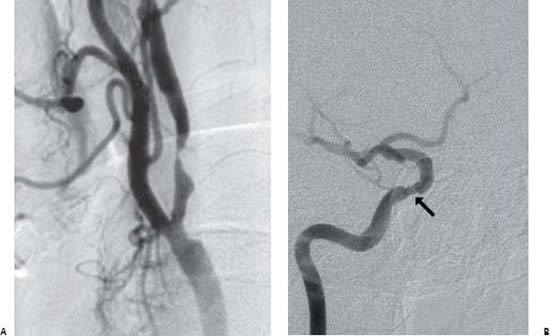Case 42 In Tandem Extracranial and Intracranial Carotid Stenosis Fig. 42.1 Selec tive cerebral angiogram demonstrating (A) 70% extracranial ICA stenosis and (B) 50% intracranial ICA stenosis.

 Clinical Presentation
Clinical Presentation
 Questions
Questions
 Answers
Answers
< div class='tao-gold-member'>
Only gold members can continue reading. Log In or Register to continue



